No Results Found
The page you requested could not be found. Try refining your search, or use the navigation above to locate the post.
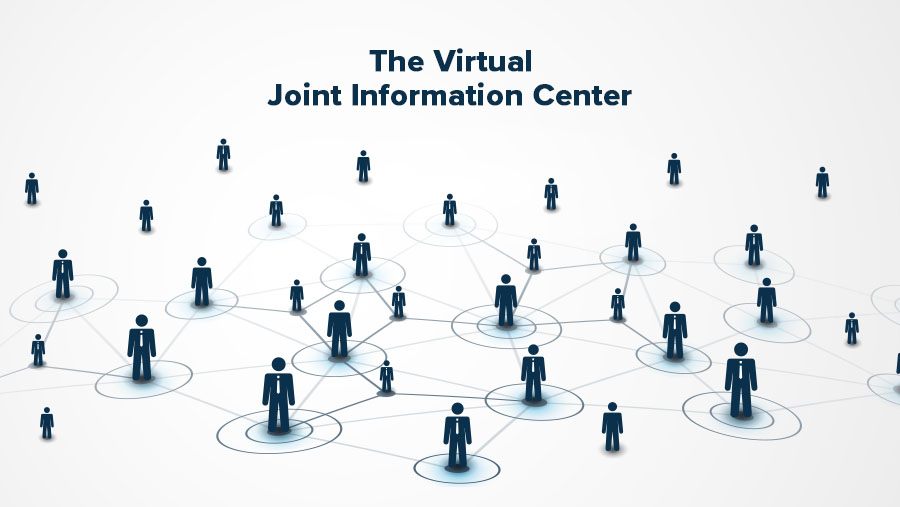
During crises and emergencies, communications staff use a Joint Information System (JIS) to facilitate and manage information flow. To provide a central location for information management, a Joint Information Center (JIC) may be established. Organizations operating under the National Incident Management System (NIMS) are required to use a JIC as a means of centralizing timely communication and public information personnel from all organizations involved in a response. However, in response to resource constraints, stakeholder expectations, and the need to shift from physical to virtual environments in the wake of a global pandemic, a virtual JIS/JIC may need to be established and placed in operation to meet the information expectations of internal and external audiences.
Additionally, during a crisis or emergency, assembling communications staff at a physical JIC may be impractical or unsafe. A virtual JIS/JIC serves the need for timely information gathering and disseminating in a response by collecting information from responders, and communications staff across a wide area and developing essential tools in a virtual setting.

The functionality of a traditional, physical JIS/JIC can be transitioned to a virtual setting for facilitating the information management cycle. Information gathering, verification and analysis, message development, coordination and approval, dissemination, tracking and documentation, and monitoring can all function at full capacity in a virtual format. Using free, low-cost, off-the-shelf tools with open-source, web or cloud-based software, and native digital platforms can provide functionality and redundancy in a crisis/emergency.
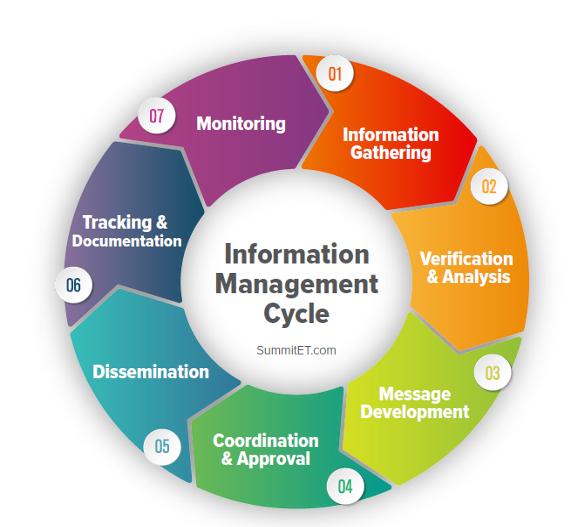
A JIC must be established in a location known and accessible to communications staff. however, it can be vulnerable to any crisis or emergency impacting geography, transportation, or infrastructure.
If an outbreak of contagious disease were to occur, gathering all information staff in one location could expose them to risk of the disease. Likewise, if isolation and/or quarantine were implemented, communicators would be unable to access the JIC and fulfill their responsibilities.
Low-cost, off-the-shelf technologies can be used to facilitate and manage information flow and reduce costs.
The virtual JIS/JIC operates at the same level of functionality as a physical JIC. Staff can work in virtual environments to manage information and communicate to internal and external audiences in a timely manner while safely working remotely.
Because materials and collaborative workspace for the virtual JIS/JIC are in a virtual space, staff do not need to consider time and logistics for setting up a physical JIC. Even if a physical JIC were required, and an option, staff can use the virtual space until the physical JIS is established. Since the same level of functionality of a physical JIC can be met, there is a cost savings associated with removing or reducing the footprint of a physical JIC.
The secure online environment of the virtual JIS/JIC can be accessed at anytime from anywhere in the world. Staff can access necessary resources while collaborating on projects in a shared, virtual space using free or low-cost open-source software, such as Google apps, DropBox, and others. These tools can also offer redundant backup systems.
SummitET® is recognized by SHRM and offers Professional Development Credits (PDCs) for SHRM-CP® or SHRM-SCP®. For more information about certification or recertification, please visit www.shrmcertification.org.
The page you requested could not be found. Try refining your search, or use the navigation above to locate the post.
SummitET’s Virtual JIS/JIC Methodology and Practice workshop offers practical solutions for building relationships, enhancing internal and external communications, streamlining information coordination and approval processes, and enhancing the information management cycle using virtual tools and techniques. For more information about this workshop or other training opportunities for yourself, your team, or your organization visit our website: www.summitet.com/workshops.

The successful and productive use of social media is an essential part of a complete emergency public information program. With over 90% of companies utilizing social media to communicate with employees or customers, it is essential for your team to be ready to communicate effectively and immediately. Through native social media drills and exercises, your team will be fully trained using the most current social media platforms without experiencing lag or software diversions. Your team can use drills and exercises for emergency preparedness and crisis response using the most current social media platforms and eliminating the chances of software lag and diversions.
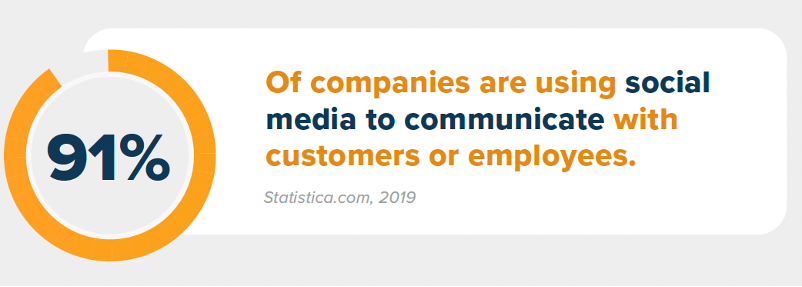
A native social media platform is one created for consumption on a particular social media platform in terms of both form and function. This means drills and exercises are performed on the original platform through secure, closed accounts, rather than through third-party software programs normally used for testing.
To keep communications secure, these accounts are closed and protected so drill and exercise communication content is only visible to approved participants. These accounts are established before drills and exercises in the same way agencies utilize their specific social media platforms in a real-world incident – to share information, gather intelligence, engage with the public, etc.
Social media accounts are free to users on all social media platforms whether accounts are secure or public. Most proprietary software programs charge per user.
Social media platforms allow access to the full spectrum of capabilities and features of the native tool. This gives the user the most realistic experience available.
Provides the ability to introduce new social media platforms and invite or remove players as needed within the emergency management community.
Social platforms are continuously updating and changing front- and back-end interfaces. Our approach allows your team to regularly test these changes in real-time.
Social accounts are closed and protected so drills and exercise content are only visible to approved participants and never mistaken for real-world communication.
Requires limited assistance and support once initial set-up and training has been conducted. Learn to build effective digital and social media campaigns for public engagement.
Proprietary software tools only mimic existing sites in an exercise setting. The use of native social media platforms grants players the ability to gain experience and familiarity with real-world, hands-on social media tools and practices for things like addressing misinformation & combating disinformation on digital & social media.
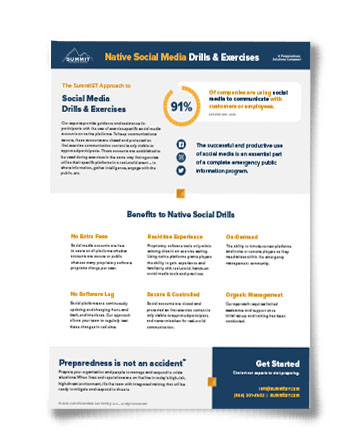
Register yourself, or your organization for a live virtual workshop to improve crisis communication skills.


CISA, reports that cyber attackers are using phishing messages or applications masked as trusted sources against newly —and often rapidly—deployed remote access and teleworking infrastructure. To protect your organization and employees, it is imperative to reduce the risk of cyber threats by building programs that effectively manage these threats. The establishment and practice of a cybersecurity program or system of protection that reduces risk from cyberattacks is essential to business continuity and data protection of any organization’s workforce. This can include assessing and securing cyber systems, developing a skilled and compliant workforce, and building a skilled information technology (IT) security team to detect and resolve threats.
If your organization has not built, trained, or exercised a cybersecurity program, now is certainly the time to do so. SummitET® can help you develop a tailored program to meet your business needs. Our top-in-field experts perform penetration testing, vulnerability assessments, social engineering testing, workforce, and information technology team training, and exercises that test incident action planning, processes, and procedures.
With emerging threats changing the business and workforce environment, organization’s must protect assets, data, and members of its workforce. To learn more about SummitET’s cybersecurity preparedness solutions or to speak directly to one of our experts.
For official, verified cyber-related alerts, questions, or to report a cyber issue, visit the Department of Homeland Security Cybersecurity and Infrastructure Security Agency (CISA) website at: https://www.cisa.gov/insights.

Convoluted incidents, the political environment, and natural disasters create challenging communication situations. Recognizing underlying driving factors, our own strengths and weaknesses, and having the ability to identify and address communication complexities affect our ability to respond properly and communicate effectively. We are living in unprecedented times and facing new challenges requiring different approaches and well-practiced communication skill sets. This blog addresses how to approach individual and organizational communication strength training and how to increase understanding.
Culture, generation, personal history, perception, bias, prejudice and lack of understanding are just a few communication complexities adversely affecting our ability to respond properly and effectively. These complexities can and will influence how our intended audiences respond to our messages. Communication skills, like muscles, must be exercised to maintain tone and strength. Athletic trainers teach that muscle response should be challenged from different vantage points. Preparing risk and crisis communication muscles should be exercised from different vantage points as well. Failure to exercise our communication muscles may reduce communication gains, inhibit communication growth and result in communication atrophy.
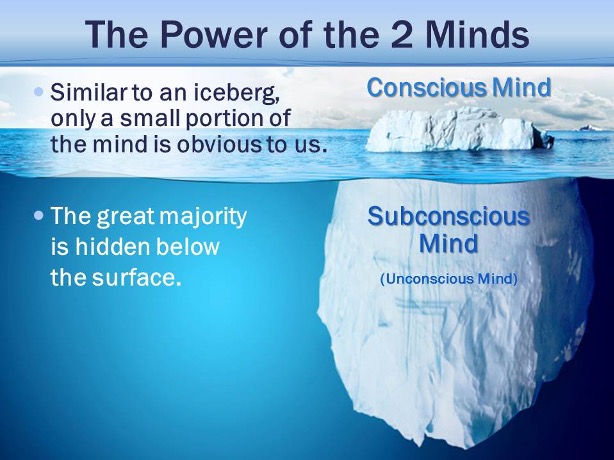
One component of communication strength training is awareness of biases and prejudices, and increasing understanding of communication complexities. It is important to recognize how personal history shapes our perspective and communication style. Our communication skills should allow us to “listen for understanding, not agreement.” Realizing the same things can mean different things to different people demonstrates the importance of active listening skills and the complexities of effective communication.
So, how do organizations and agencies prepare to respond to the convergence of several sensitive and challenging matters impacting our communities today? As futurist and philosopher Alvin Toffler once wrote: “The illiterate of the 21st century will not be those who cannot read and write, but those who cannot learn, unlearn, and relearn.” We need to develop and exercise our fast-twitch communication muscles. Regularly exercising helps to be prepared to respond when needed, enhances organizational ability to respond to unpredictable events, provides organizational agility, and integrates specific, high intensity training. Organizations and agencies, much like athletes, should specifically train to optimize their fast-twitch communication muscles to strengthen their strategic communication plans.
Exercising these communication skills enables businesses to sprint through difficult times, jump over obstacles, become more agile in challenging situations, and operate at peak performance levels in high intensity environments. Being an elite strategic communicator requires development of communication muscles to identify and address the complexities of communication.
Current events have highlighted need for more advanced and strategic communication in uncertain times. Regardless of the position we hold or authority we have been given, at some point, we all must face our own communication complexities, strengths, and weaknesses. Preparing your organization or agency to address communication complexities verifies our strengths, highlights our weaknesses, and provides avenues for improvement. Communication complexities require real talk, by real people, who are well-trained, well-prepared, and ready to address real issues.
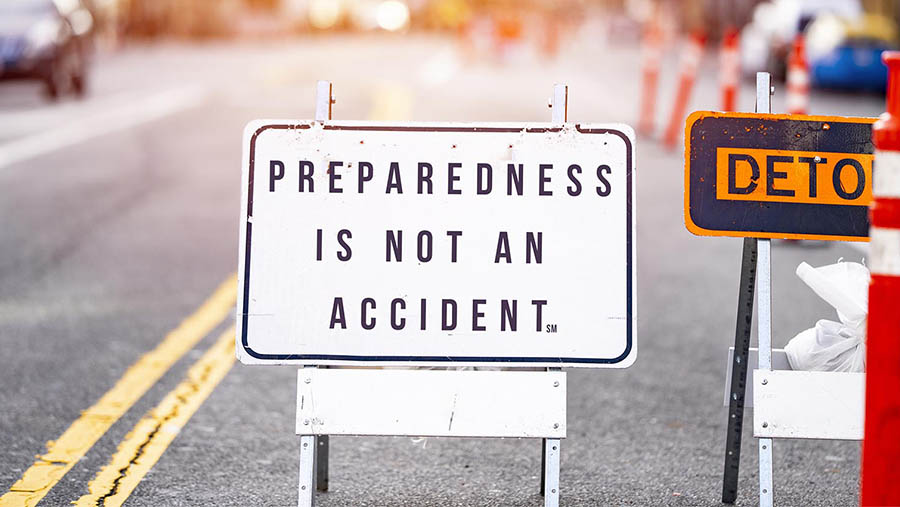
Preparedness is something that…well…you have to prepare for. It takes time and effort to prepare for things which may occur in the future. Many of us try to plan for inevitabilities such as saving for a daughter’s wedding, planning for a child’s college education, or even pre-arranging our own funerals. Hopefully, much thought has been given to what would happen in the event of a job loss or other incidents having a negative financial and/or emotional impact on our families. Preparing for future events is an important part of life, and it is something we do routinely. However, it is important to prepare not just for expected events, but also for things that are not foreseen.
Identifying what to be prepared for can be quite the challenge. According to Dictionary.com, preparation is defined as “to make ready or suitable in advance for a particular purpose or for some use, event, etc.”
Since preparedness takes many forms, let’s consider preparing for a day-hike. We need to make sure our shoes/boots and clothes are appropriate for where we are going. We need to have sufficient food and water for the duration of the hike. The cell phone needs to be fully charged and we should notify someone of where we’re going and when we expect to return. You should also consider packing a poncho, a compass, some energy bars, something to drink/purify water, a good knife, a flashlight, sunscreen, and bug repellent. We need to prepare for weather changes, injuries, or if we leave the trail for some reason, and/or become disoriented.
Preparing for changing conditions applies not only to a day-hike, but to life in general. As you can see, anticipating, developing, and planning are important for a successful day-hike outcome.
From a business perspective, we need to look at things in the same general way—be prepared for the expected. We should also be prepared for the unexpected and what may happen should conditions change. Some of the obvious points of concern include employee welfare, financial stability, and continued customer support during a challenging time. A Continuity of Operations Plan (COOP) should be developed to help ensure the company can continue to function and support its internal and external stakeholders.
The Federal Emergency Management Agency (FEMA) provides general COOP information and planning tools. While this document is geared toward government, the overall philosophy relates to a broad spectrum of applications. It is important to note, of the first four phases of COOP activation, the first is preparedness and readiness.
Communications planning is also an important part of preparedness. When an adverse event occurs, how are you going to communicate pertinent information to your audience? It is incumbent upon organizations to develop, train, and exercise a crisis communication plan. A crisis communication plan helps prepare an organization to communicate accurately and confidently during an emergency. It also addresses different audiences and provides a strategy for communicating information specific to stakeholders’ interests and needs. The image of the organization can be positively or negatively impacted by public perceptions of the handling of the incident. A well- trained and practiced crisis communication plan can improve an organization for communication success.
As you can see, Preparedness Is Not an Accident®. It takes a concentrated effort to look into the future and anticipate what may happen—then figure out how you are going to deal with it. Our experts help corporations and agencies identify and address these unforeseen crises. Integrating a continuous cycle of Assessment, Planning, Solution development, Training, Exercising, and Reassessment (The APSTER ProcessTM) increases the greatest level of preparedness and ensures that Preparedness Is Not an Accident®.

The workplace is changing to adapt to the new global situation, thrusting millions of employees into working remotely. Business owners and leaders must navigate the “new normal” with a willingness to adapt. You may find employees are happier during the initial months of working from their homes. Studies show employees working from home report feeling less stressed overall. But what does this mean for the long-term if you decide to continue with remote work for your business?
Assessing and reassessing your workforce is essential in making viable plans for your organization and leadership. Although, not a new concept, the magnitude of COVID-19 forced leadership to suddenly transition from the traditional work environment to a remote working environment. While most organizations have a continuity of operations plan (COOP), some leaders may have been caught off-guard by this sudden transition. For those who are unsure about how leadership functions in this new normal, SummitET compiled six-steps to address the challenges you will likely face.
Before acting upon possible issues, assess yourself, your business, and your employees. Address your leadership management styles and your ability to lead affectively in a remote environment. How does the remote environment change your ability to manage product or service deliverables?
According to a Gallup poll, “leaders/managers motivate employees, build trust-based relationships, and have the ability to overcome adversity.” The good news is that these things can be accomplished remotely. Although separated by distance and having to communicate virtually, leadership characteristics are still recognizable and important for the continued success of the organization. Recognizable leadership characteristics include being viewed as trustworthy, proactive, and organized. Each of these characteristics can instill a sense of calm throughout the organization.
Are employees’ basic needs being met while working from home?
Do they have the equipment they need to perform daily tasks?
What affect will result from a decrease in direct peer connections?
How important are face-to-face, in-person interactions to your business model?
It is also imperative to assess your business capabilities and securities.
Do you have staff who can address your information security?
Should you hire a third party?
How does the change in workforce affect your bottom line and deliverables?
What have you learned up to this point? The assessment phase will guide you through COOP implementation and effectively and efficiently continue remote business productivity.
The flexibility of your leadership before, during, and after a major change in your organization is crucial. It is easy for employees to lose trust in management without proper communication. A loss of trust can result in decline in work productivity and higher staff turnover. Both of which can impact your bottom line.
Strong leadership, “the skill of influencing people to take action, with character that inspires confidence and excellence, and maximizes their efforts towards the achievement of a goal” is critical in adapting to this new global transition. Leadership styles vary based on organizational culture, the leader’s skill sets, and the leader’s willingness to adapt leadership traits for the common good. Leadership is teamwork. Assess your teamwork quotient by asking employees the following:
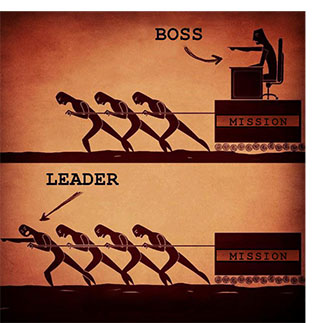
What can I do to make your job easier?
What do you need to be more efficient?
How can I help you grow?
How can we help build a better organization, especially with this new era of working remotely?
The remote environment proposes new challenges to the practice of effective leadership. Be creative in developing strategies to connect over the phone, by email, or via video calls. Incorporate a fun element in your team calls or find a way to learn something new about someone on a personal level.
Remember to connect often but be efficient on your calls by preplanning. For example, develop an outline of deliverables, timelines, and next steps for each team member. As a reference, consider the graphic below when developing and executing your plan. Where do you fall in this leadership self-assessment? Are you effective, ineffective, too expansive, too focused, and/or somewhere in the middle? Information contained below may serve as a resource as you develop your leadership style.
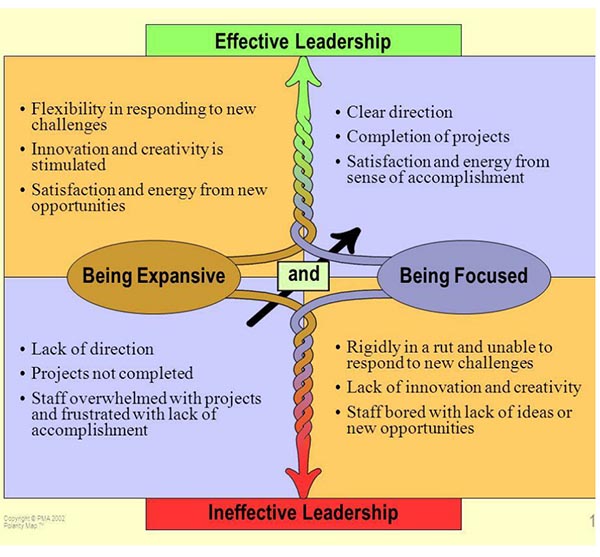
As you would with a crisis communication plan, communicate with your stakeholders regularly. Silence may lead them to question your organization’s ability to continue operating effectively. Use existing digital channels like newsletters, webinars, virtual panel discussions, and social/digital media to enhance your communication strategies.
In direct client communications, be open and straightforward when discussing how your new environment will affect contracts and performance going forward.
It may be important to demonstrate to stakeholders (i.e., employees, corporate executives, clients, consumers, regulators, etc.) that compliance continues, even in a remote environment. Know what compliance issues are currently in place and determine how to maintain them in the remote working environment. Auditors and regulators will need to continually assess your business practices regardless of your situation. Review laws and tax requirements that may affect you. Nexus tax, state tax, and employment laws such as the CARES Act, etc., vary from state to state. Ensure you can track hours and address any changes in reimbursable expenses. From the leadership perspective, recognize and adapt to those business-related issues which can improve your business position.
Working remotely has created a new cybersecurity reality. IT departments are challenged to ensure each remote employee has the necessary software, hardware, and security protocols necessary to do their job. Safeguard your employees and equipment with virtual private network securities. Enable a multifactor authentication process for employees’ emails and other web-based software programs. Train employees to be vigilant against phishing email scams, creating strong passwords, and managing account access.
Working remotely also requires leaders and employees to overcome challenges and assess their developmental and business products. SummitET ‘s six-step APSTER Process™ assists leadership by ensuring and maintaining a consistent product development methodology. Continuous reflection and assessment will help keep your business on its forward trajectory. The APSTER Process provides a simple guideline for this process:
Assessment
Planning
Solution Development
Training
Exercises
Reassess
If you would like additional information on business continuity, cybersecurity, strategic communication, or the APSTER Process, connect with SummitET’s experts for a consult. Remember, preparedness is not an accident℠. Strategic planning and preparation are crucial for meeting your long-term goals and objectives.
SummitET® is recognized by SHRM and offers Professional Development Credits (PDCs) for SHRM-CP® or SHRM-SCP®. For more information about certification or recertification, please visit www.shrmcertification.org.
The page you requested could not be found. Try refining your search, or use the navigation above to locate the post.